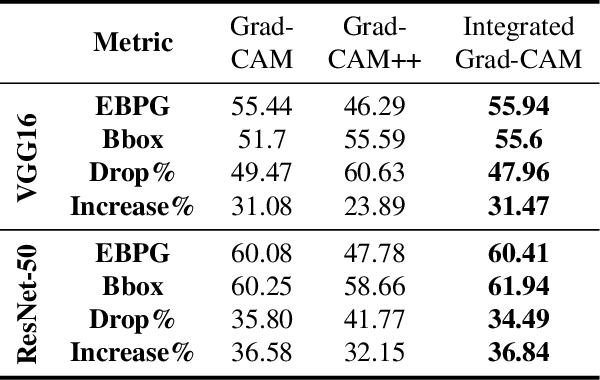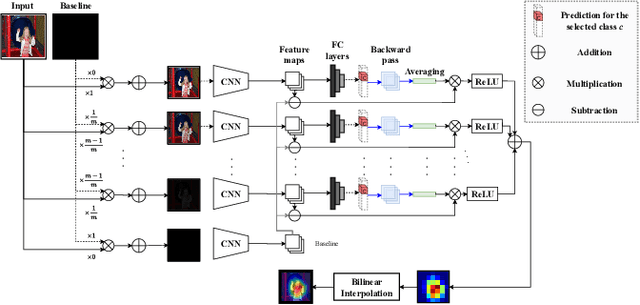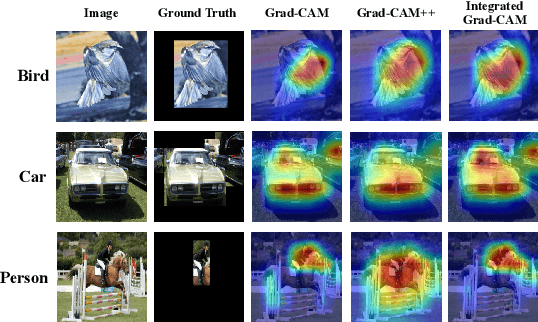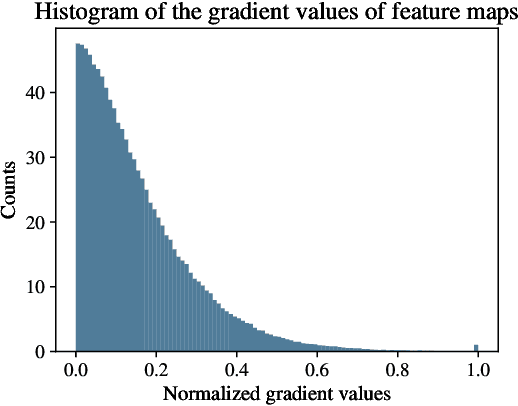Mahesh Sudhakar
Integrated Grad-CAM: Sensitivity-Aware Visual Explanation of Deep Convolutional Networks via Integrated Gradient-Based Scoring
Feb 15, 2021



Abstract:Visualizing the features captured by Convolutional Neural Networks (CNNs) is one of the conventional approaches to interpret the predictions made by these models in numerous image recognition applications. Grad-CAM is a popular solution that provides such a visualization by combining the activation maps obtained from the model. However, the average gradient-based terms deployed in this method underestimates the contribution of the representations discovered by the model to its predictions. Addressing this problem, we introduce a solution to tackle this issue by computing the path integral of the gradient-based terms in Grad-CAM. We conduct a thorough analysis to demonstrate the improvement achieved by our method in measuring the importance of the extracted representations for the CNN's predictions, which yields to our method's administration in object localization and model interpretation.
Ada-SISE: Adaptive Semantic Input Sampling for Efficient Explanation of Convolutional Neural Networks
Feb 15, 2021



Abstract:Explainable AI (XAI) is an active research area to interpret a neural network's decision by ensuring transparency and trust in the task-specified learned models. Recently, perturbation-based model analysis has shown better interpretation, but backpropagation techniques are still prevailing because of their computational efficiency. In this work, we combine both approaches as a hybrid visual explanation algorithm and propose an efficient interpretation method for convolutional neural networks. Our method adaptively selects the most critical features that mainly contribute towards a prediction to probe the model by finding the activated features. Experimental results show that the proposed method can reduce the execution time up to 30% while enhancing competitive interpretability without compromising the quality of explanation generated.
Explaining Convolutional Neural Networks through Attribution-Based Input Sampling and Block-Wise Feature Aggregation
Oct 01, 2020



Abstract:As an emerging field in Machine Learning, Explainable AI (XAI) has been offering remarkable performance in interpreting the decisions made by Convolutional Neural Networks (CNNs). To achieve visual explanations for CNNs, methods based on class activation mapping and randomized input sampling have gained great popularity. However, the attribution methods based on these techniques provide lower resolution and blurry explanation maps that limit their explanation power. To circumvent this issue, visualization based on various layers is sought. In this work, we collect visualization maps from multiple layers of the model based on an attribution-based input sampling technique and aggregate them to reach a fine-grained and complete explanation. We also propose a layer selection strategy that applies to the whole family of CNN-based models, based on which our extraction framework is applied to visualize the last layers of each convolutional block of the model. Moreover, we perform an empirical analysis of the efficacy of derived lower-level information to enhance the represented attributions. Comprehensive experiments conducted on shallow and deep models trained on natural and industrial datasets, using both ground-truth and model-truth based evaluation metrics validate our proposed algorithm by meeting or outperforming the state-of-the-art methods in terms of explanation ability and visual quality, demonstrating that our method shows stability regardless of the size of objects or instances to be explained.
 Add to Chrome
Add to Chrome Add to Firefox
Add to Firefox Add to Edge
Add to Edge